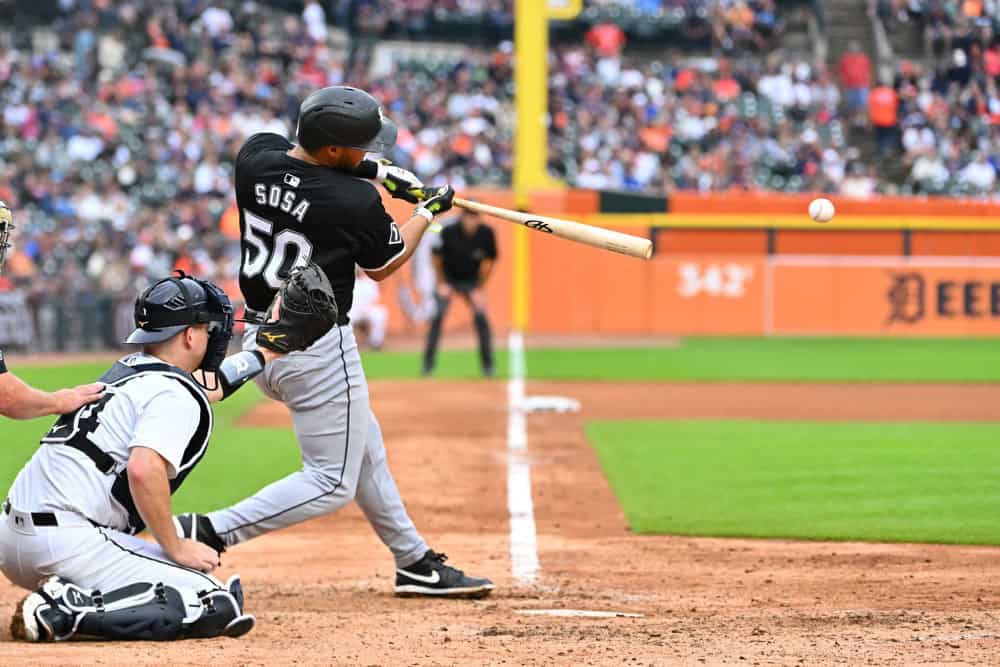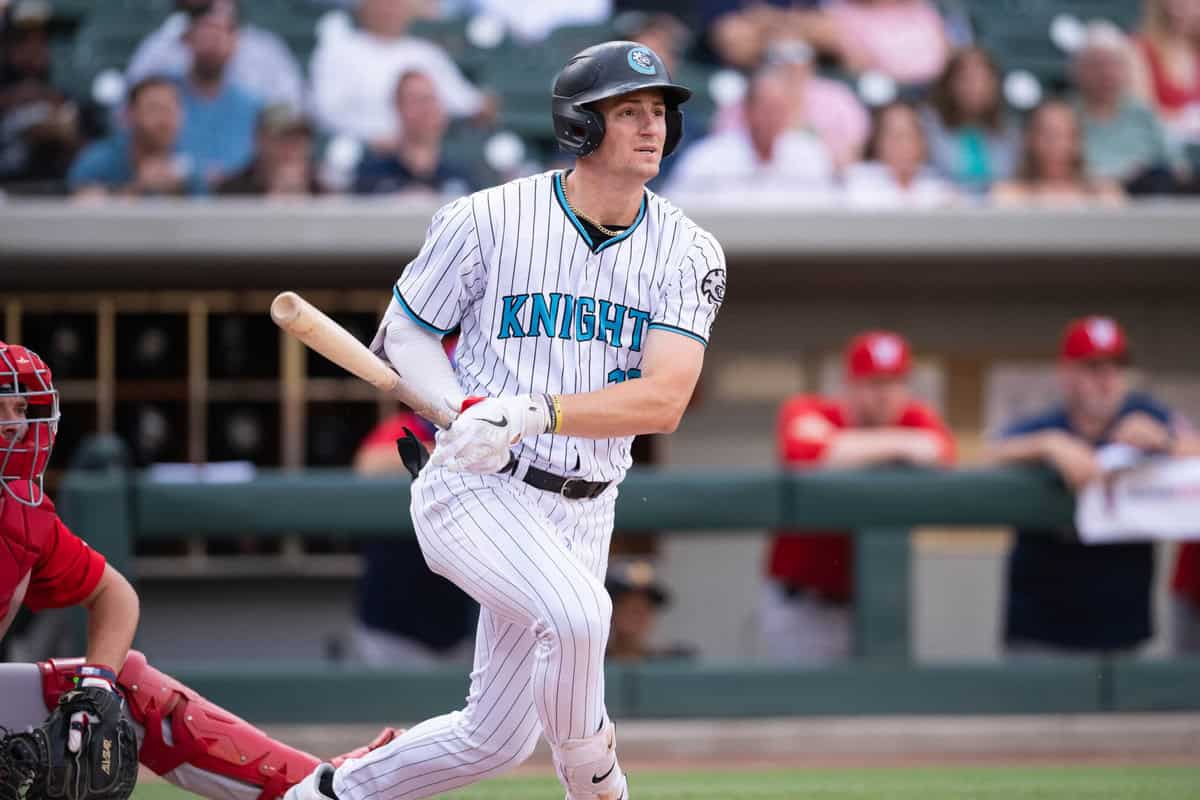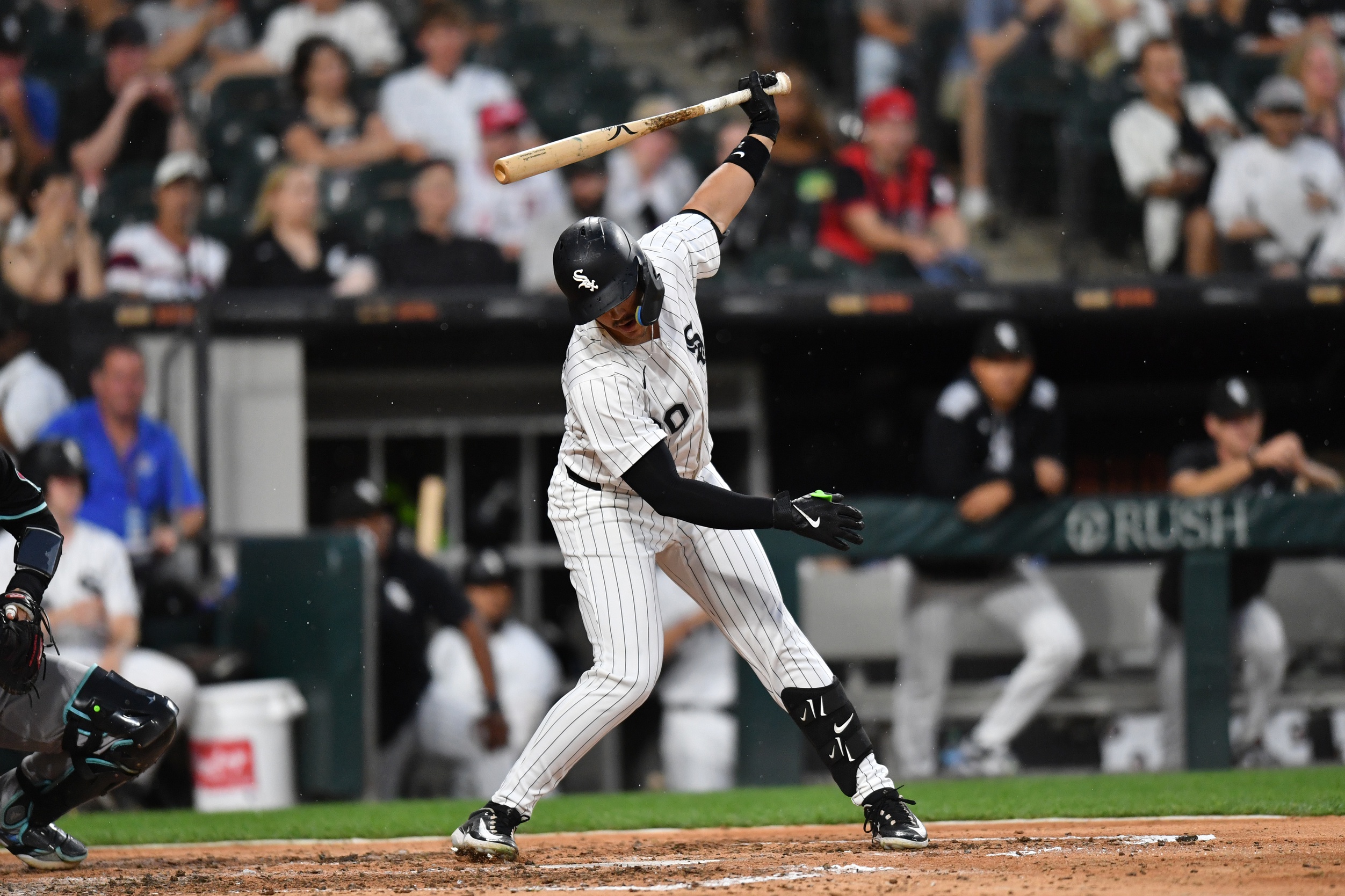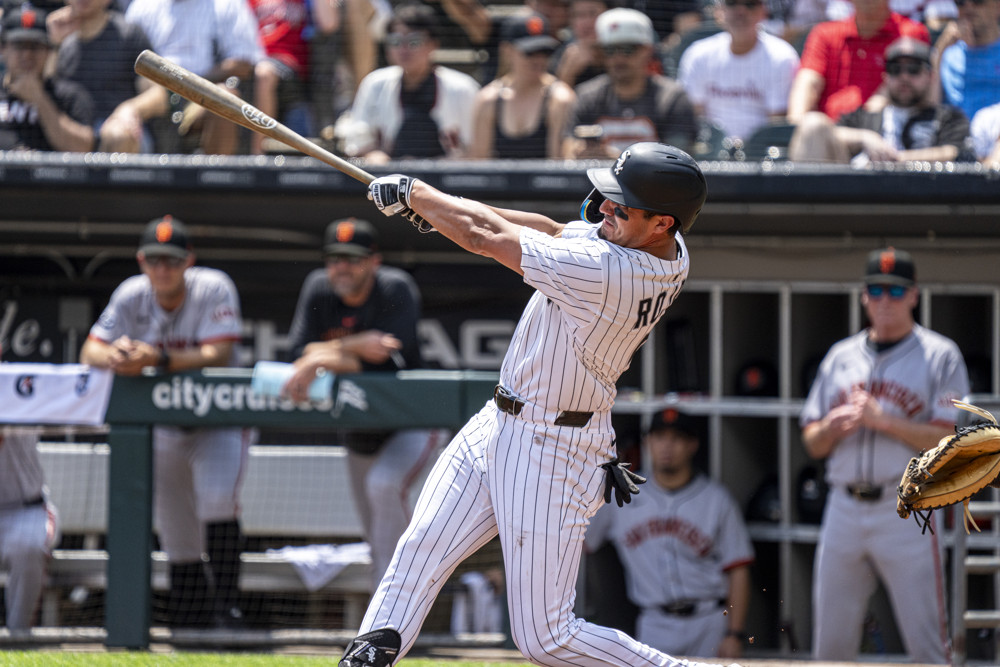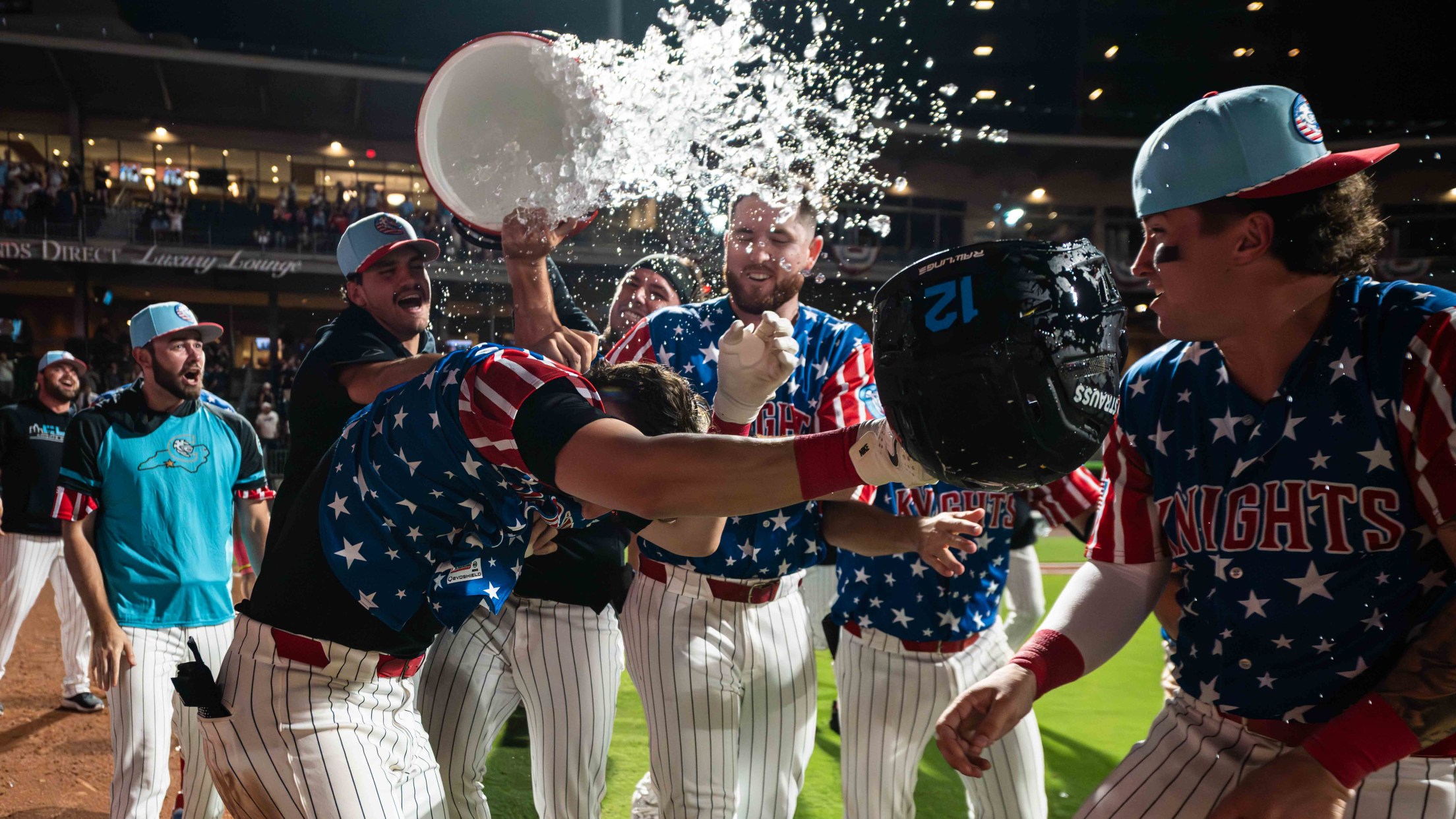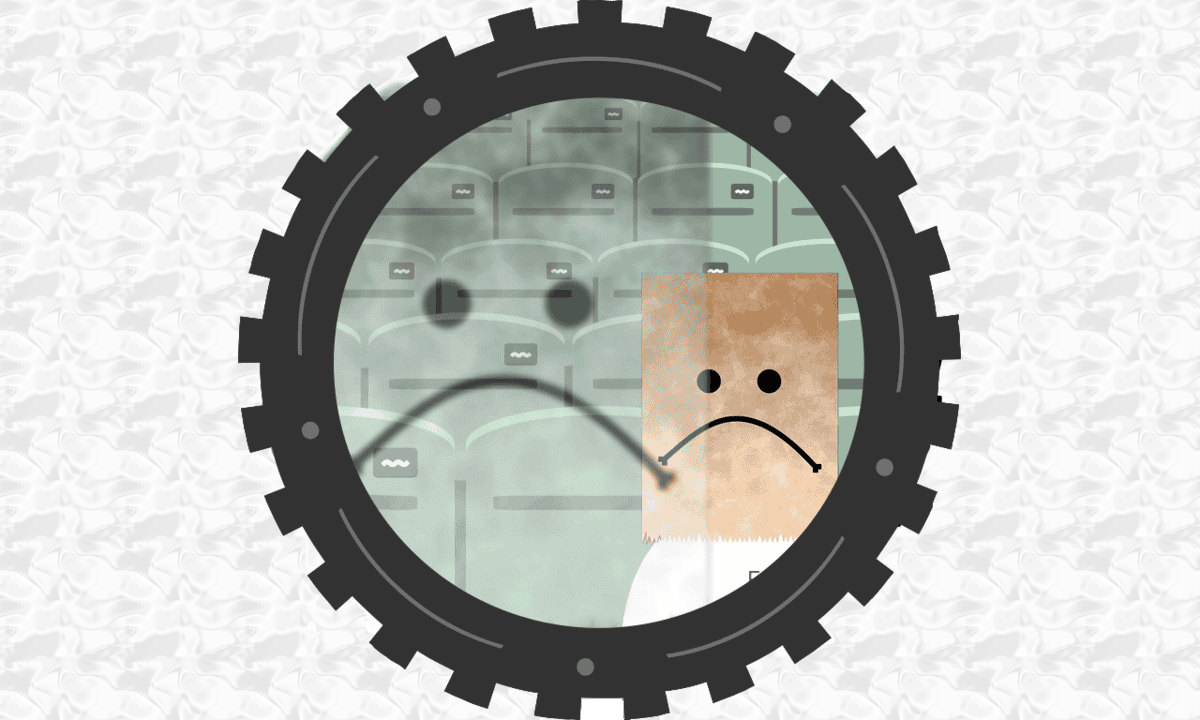Right after arguably the worst month of his up-and-down major league career on both sides of the ball, a wrist injury to Brooks Baldwin cleared the lane for Lenyn Sosa to hit .373/.398/.566 in the month of September.
He also ran an absurd .435 batting average on balls in play in that month, and swung at 39 percent of pitches out of the strike zone, which would be the fifth-highest qualified chase rate in the sport stretched out over a full year. So if someone offered the argument that buying into Sosa's September is believing in something just for the sake of believing in something, it would be hard to shut it down.
But after the struggles, second-guessing, countless trips to Charlotte and disparate playing time that Sosa has endured ahead of a career crossroads (the 24-year-old will be out of minor league options next spring), his finish gave him something to hold onto before heading out to play winter ball in his native Venezuela.
"I played with more confidence, I was more sure of myself," Sosa said via interpreter. "I definitely proved that I belonged year. Next year is just a matter of trying to keep progressing and get better numbers, because I know that is something I can do."
Asked his preference between second and third base, the two spots he manned most frequently this past season, and Sosa said he'd like to return to his natural position of shortstop. He concedes that his range is currently insufficient for it, but that his outward goal is to improve that during winter ball. It seems far-fetched, as shortstop hasn't been his primary position even in the minors since 2022, but speaks to how Sosa is not nearly as discouraged by the tumult of his past two seasons as you, me, or the White Sox organization might be.
When Grady Sizemore took over as interim manager in August and tried to encourage a dispirited White Sox clubhouse to "play free," that fit just fine for Sosa, who felt his prior major league stints were plagued by worrying himself to death about every mistake.
"He's a person that you respect, that keeps you confident," Sosa said via interpreter. "It doesn't matter if the results are good or bad, he's the same person. He's always trying to give you energy and bring you positive thoughts."
When searching for analogues for Sosa's chase rates, the players who are able to hold down a full-time job while chasing that much are not on the verge of swinging themselves out of the league. Yainer Díaz and Salvador Perez chase a bit more than Sosa, Jesús Sánchez and Nicholas Castellanos chase about the same. Their lack of discipline limits their offensive ceilings, but also reflects that they have too much bat-to-ball skill to ever be forced into bigger changes, and Luis Robert Jr. could testify to the idea that tamping down an aggressive hitter's confident mindset can bring unintended consequences.
Sosa's aversion to walks means he has to ride the wave of hitting his way on base, so a .208 BABIP in August fueled The Worst Month Ever, and a more normal marks saw him post a very rosterable 92 wRC+ across June and July. But since he's able to make contact with such a breadth of pitches -- Statcast rated him at 78th percentile for whiff rate -- chasing doesn't equate to destroying Sosa's at-bats. So it stands to reason that his offseason focus centers around defense, because with a more reliable infield glove, Sosa's bat is a lot closer to being acceptable than his cold streaks can make it look.
If it makes you feel any better, when you go onto FanGraphs, set the parameters at American League hitters with over 150 plate appearances and sort by hard hit rate, Miguel Vargas ranks a spot ahead of Joey Loperfido, part of Yusei Kikuchi trade return that initially inspired much jealousy. The problem is there only six out of 207 such hitters behind them, and two of them (Nicky Lopez and Dominic Fletcher) also played for the White Sox in 2024.
The Sox and Vargas have identified an overlong hand load in his swing as the primary culprit for his dismal performance against velocity, but combatting it has not been a turnkey process, as a .107/.217/.170 line in 42 games on the South Side would already indicate.
"Trying to get out of my slump, or whatever it's called, is obviously a new deal for everybody," Vargas said during the final weekend of the season in Detroit. "I've been feeling better. Sometimes the result of the game is not how I feel that day. I'm still working on that and trusting the process."
Vargas' sterling out-of-zone chase rate (21.6 percent) puts him at the opposite end of the league standings, and the double-digit walk rates that have become a consistent feature of his game while spending the bulk of his last few years in Triple-A would have been a tonic to almost any White Sox offense of recent vintage. Any reason he can offer pitchers to steer away from fastballs in the zone will quickly result in a lot of free passes.
But it will have to come fairly soon to keep the decisions from becoming uncomfortable. Vargas said he's planning to spend the offseason working on his third base defense, which makes sense since it has most resembled a positional home for him, but also could place him athwart Sosa and Bryan Ramos for at-bats. And like Sosa, Vargas will enter next spring out of minor league options.
For right now, he finds the company to be a positive.
"I think we've got a special group of young guys here. We all know our job here," Vargas said. "I'm excited for what is coming next year for us and what we can do together. It's going to be special."
While the Renaissance was a multi-century historical period and cultural movement defined by social change and scientific advancement, the Benintenaissance is defined by a 30-year-old outfielder shaking off ~900 below-average plate appearances in a White Sox uniform to hit .263/.328/.502 after the 2024 All-Star break. Yet both are defined by the breadth of theories, research and interpretation they inspired.
For example, are the positive offensive results Benintendi was able to generate by ditching a leg kick for a hybrid leg lift/toe tap the result of putting less strain on his sore left Achilles? A modification made necessary by the effects of aging? Or just something made necessary by all these dang kids throwing the ball so hard these days?
"It's simplified, and pitchers are too good now and they throw too hard, that leg lift for me is probably a thing of the past" Benintendi said of his new loading action. "When guys weren't all throwing 100 [mph, it worked]. Now guys are all throwing hard. It's at little easier when guys were all throwing 90 mph fastballs. Now guys are throwing 90 mph sliders and changeups."
Benintendi's actual word should carry the day for now. But when Benintenaissance Studies is a 300-level college course 150 years from now, student papers will have to use primary sources to address how the modified toe tap's evolution over subsequent years revealed and confirmed its true purpose over time.
"I think I've got the feel now to where it's very repeatable," Benintendi said. "I'll do it this offseason and try to make it better. It's a pretty simple move. There's things I can tweak here and there."
